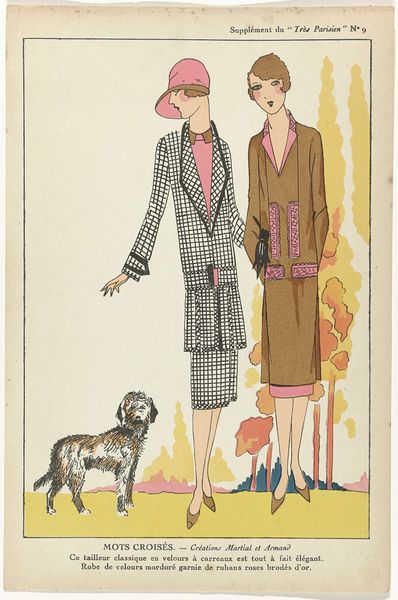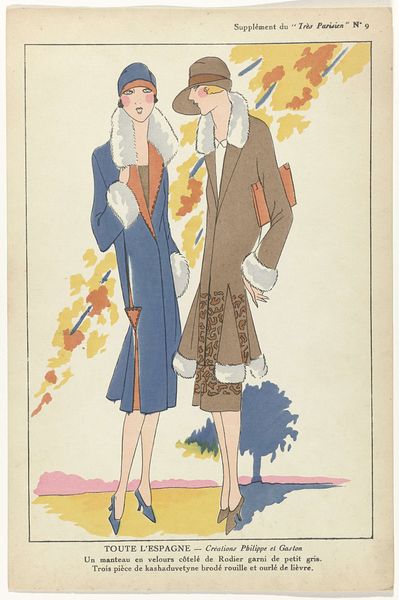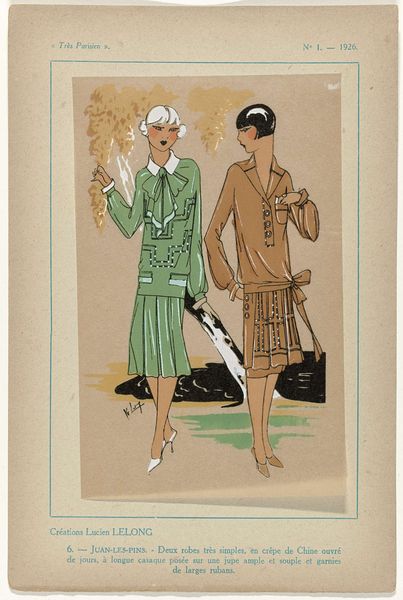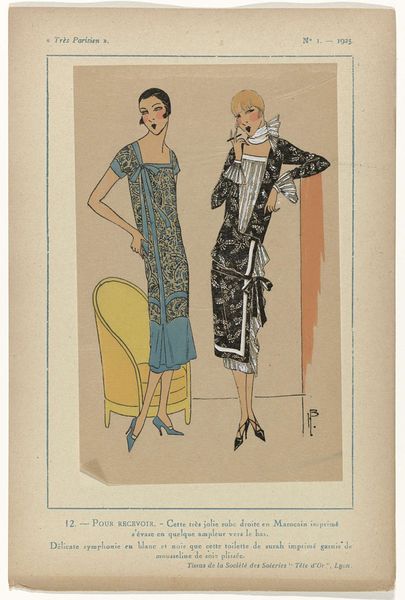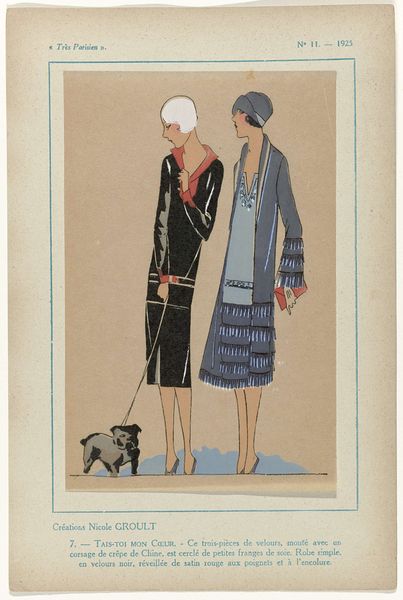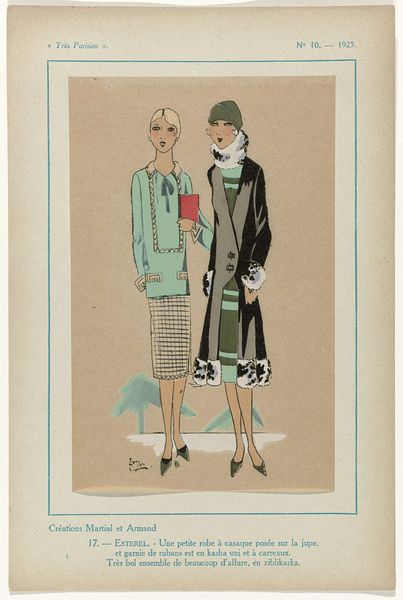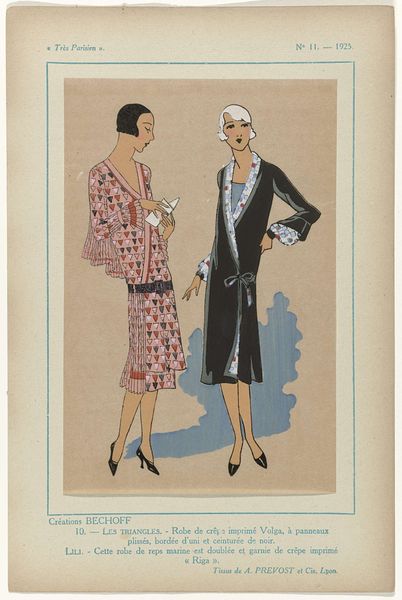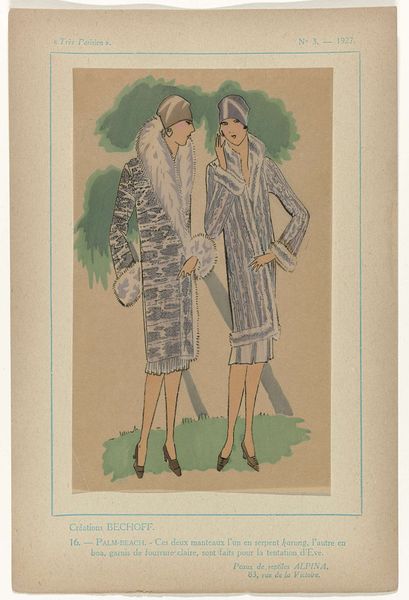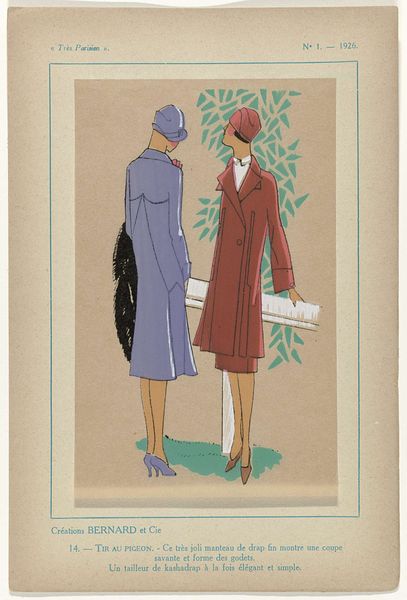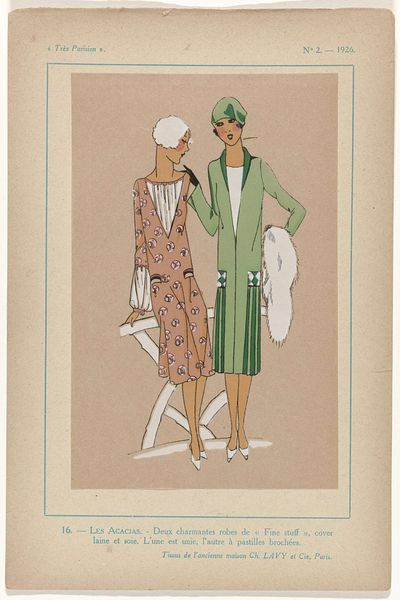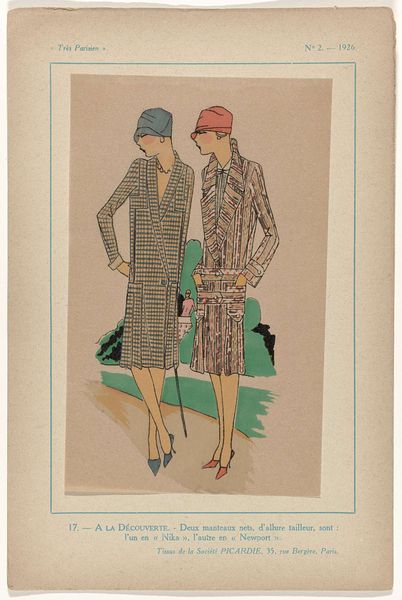
drawing, print, paper, ink, pastel
#
portrait
#
art-deco
#
drawing
# print
#
figuration
#
paper
#
flat colour
#
ink
#
watercolour illustration
#
pastel
#
dress
Dimensions: height 195 mm, width 120 mm, mm
Copyright: Rijks Museum: Open Domain
Curator: Immediately, the use of such flattened space speaks to me of interwar anxieties—there’s a fragility there that defies the affluence represented by their clothing. Editor: We’re looking at "Très Parisien, 1926, No. 1, pag. 1: Créations Philippe et Gaston,” a drawing and print currently housed at the Rijksmuseum. Joumard really captures a certain elegance of the era. Curator: Yes, the illustration encapsulates the ideal flapper. The cloche hats, the dropped waistlines... it’s a clear visual signifier of female emancipation. But let's look at the economic forces driving that emancipation; who truly had access to these styles and this lifestyle? Editor: I agree, that must be considered. And if we look closer at the materials and production, the choices Joumard made, it's tempting to imagine these figures as products themselves, packaged and consumed, especially as part of this very print medium advertising the dressmakers Philippe et Gaston. Curator: The commercial context is undeniable, influencing our understanding of the work. The flat blocks of color and sharp outlines also suggest this standardization, dehumanization almost. How does the artist use form to reinforce that? What's communicated through line, through a lack of depth, or of visible brushstroke? Editor: Absolutely, the simplification invites scrutiny of the subjects, inviting interpretation. But does the presence of the little dog disrupt that commodification by reminding us of domesticity, companionship? Or does even that feed into aspirational lifestyles depicted here? Curator: That tension is precisely where meaning resides! What’s presented, what’s concealed, and what the viewer projects given their own social positioning… Joumard gives us fertile ground for dissecting gender, class, and consumerism in the 1920s. Editor: Indeed, a snapshot reflecting both progress and its limitations. Thank you for this, it's provided me with a new lens for analyzing not just the image itself but the very cultural values it promotes, and possibly critiques.
Comments
No comments
Be the first to comment and join the conversation on the ultimate creative platform.
